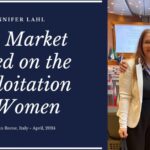 Embryonic Stem Cells Need Not Apply:
Embryonic Stem Cells Need Not Apply:
I just can’t even keep up with the advances some days. My inbox is filled with the news of patients being treated using adult stem cells, their own stem cells, or more advances in just the research side of adult stem cells.
Here are some amazing stories from this week:
- Woman receives windpipe built from her stem cells
- Same story repeated over here too
- And this story, using the patient’s own stem cells to treat their heart failure
And then stories like this which just make me want to pull my hair out because they are SO misleading and factually WRONG because it leads the headline, “Stem cells restore hearing, vision in animals” with a statement about embryos (intimating embryonic stem cells) but the BREAKTHROUGH is with adult stem cells!
See:
“Stem cells from tiny embryos can be used to restore lost hearing and vision in animals, researchers said Tuesday in what they believe is a first step toward helping people.
One team repaired hearing in guinea pigs using human bone marrow stem cells, while another grew functioning eyes in tadpoles using frog cells.”
No tiny embryos were used! Human bone marrow stem cells were used or frog embryos don’t form blastocysts, therefore there are no frog embryonic stem cells. And even more disingenuous is the use of the photo above of embryonic stem cells.
Author Profile

- Jennifer Lahl, MA, BSN, RN, is founder and president of The Center for Bioethics and Culture Network. Lahl couples her 25 years of experience as a pediatric critical care nurse, a hospital administrator, and a senior-level nursing manager with a deep passion to speak for those who have no voice. Lahl’s writings have appeared in various publications including Cambridge University Press, the San Francisco Chronicle, the Dallas Morning News, and the American Journal of Bioethics. As a field expert, she is routinely interviewed on radio and television including ABC, CBS, PBS, and NPR. She is also called upon to speak alongside lawmakers and members of the scientific community, even being invited to speak to members of the European Parliament in Brussels to address issues of egg trafficking; she has three times addressed the United Nations during the Commission on the Status of Women on egg and womb trafficking.
Latest entries
 Assisted Reproductive TechnologyApril 16, 2024Founder Jennifer Lahl’s Speech on Surrogacy to the Casablanca Declaration
Assisted Reproductive TechnologyApril 16, 2024Founder Jennifer Lahl’s Speech on Surrogacy to the Casablanca Declaration #BigFertilityFebruary 27, 2024No, Alabama Didn’t Ban IVF
#BigFertilityFebruary 27, 2024No, Alabama Didn’t Ban IVF ArticleSeptember 25, 2023The Little Engine That Could
ArticleSeptember 25, 2023The Little Engine That Could SurrogacySeptember 12, 2023Surrogacy Scandals Continue
SurrogacySeptember 12, 2023Surrogacy Scandals Continue

